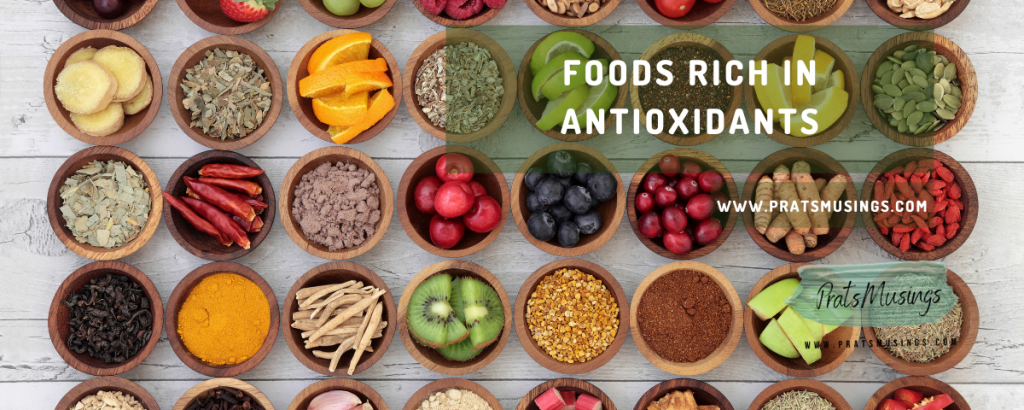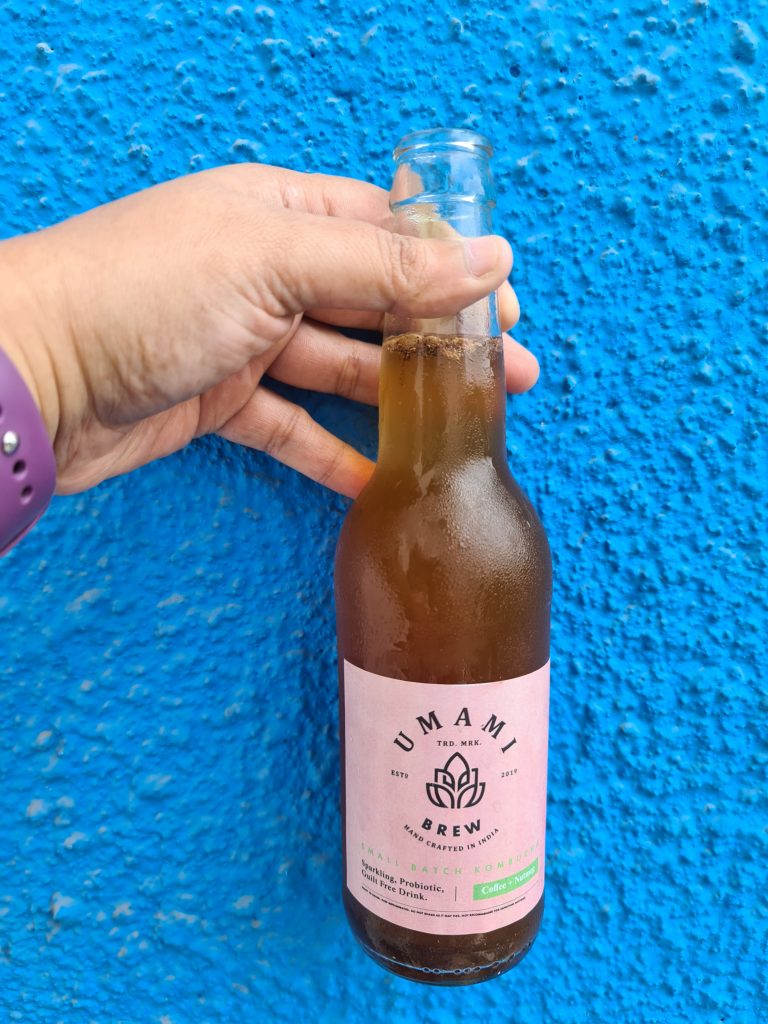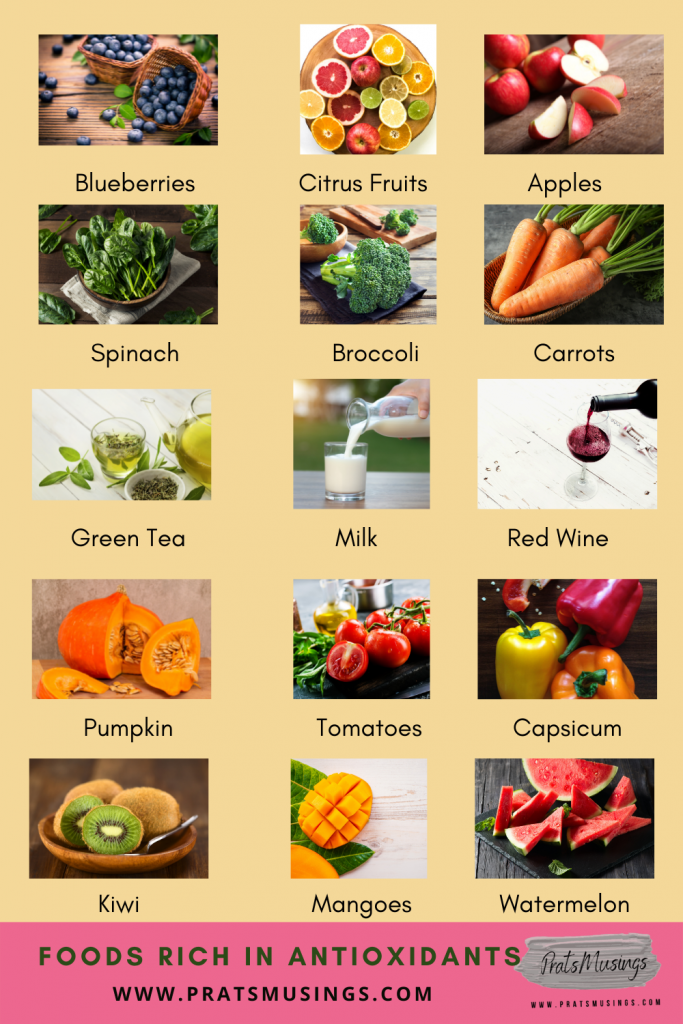
It’s no secret that antioxidants are incredibly beneficial to good health. It’s believed the antioxidants in food can help reverse or slow aging, enhance your immune system, improve your gut health, increase your energy and improve heart and other organ health. And there are ways to get more antioxidants into your diet if you plan your meals well!
Given all we know about antioxidants and their beneficial properties, it’s amazing more people don’t get enough fruits and vegetables, the primary sources of antioxidants. Experts recommend a minimum of 5 servings of fruits and vegetables daily, but say getting 7-10 servings is best. Here are 8 ways to get more antioxidants into your diet.
What is the importance of antioxidants in food?
Ongoing studies and research indicate that a diet that is high in antioxidants may reduce the risk of many diseases. The importance of antioxidants in food is that antioxidants help to scavenge free radicals from the body cells and prevent or reduce the damage caused by oxidation. That is all the more reason for you to look at ways to get more antioxidants in your diet.
8 Ways to get more Antioxidants into your Diet
Give your body better protection by using food that is rich in antioxidants in food. Antioxidants in food is not just good for health, but also good for your skin and hair! It helps a gut cleanse and you can be sure of a healthy body.
So, let’s get started, shall we? Here are 8 ways to get more antioxidants into your diet.
1. Eat a hearty breakfast

Breakfast doesn’t have to be a hurried toaster tart on the way out the door. Try this antioxidant rich food recipe for your breakfast. Toss in some strawberries, soaked chia seeds and yogurt into a blender. Make a delicious smoothie and pour your delicious mixture into a cup and head out the door. You’ve just added fruits and probiotics that help a gut cleanse in your daily intake. Like your muesli? Add some frozen or fresh berries and some chopped banana and nuts like almonds, pistachio and melon and sunflower seeds into the muesli. Top with cold or hot milk and you have a power packed breakfast ready.
2. Indulge in healthy snacks

Here’s an easy way to get more antioxidants in your diet. How about a handful of raisins for a snack, or some fresh red grapes? Dip some strawberries in yogurt. You’ll feel decadent, but the berries provide the color you’re looking for. Need crunch? How about some baby carrots dipped in hummus? Consider a handful of pecans, walnuts, almonds or a healthy trail mix for crunch and a nice antioxidant boost.
MUST READ: HOW TO MAKE YOUR OWN TRAIL MIX
3. Prepping for lunch and dinner

It might sound trite, but adding a salad to each of your main daily meals can add loads to your overall health and well-being. They don’t have to be boring, and they don’t have to be just salad greens. If you’re going classic, add some red pepper slices to your green salad, some tomatoes to the Greek salad, or tart cranberries to your field greens. Whip up a broccoli salad for lunch, or be adventurous and mix up a rice salad with a mélange of fresh vegetables like string beans, tomatoes, peppers and red onions. Or just indulge in a plateful of microgreens that are my current favorite!
4. Don’t miss the dessert

It’s alright to have a sweet tooth! Most of us do, and there is no harm in it. But do choose desserts that are rich in antioxidants. You can have a handful of grapes or a bowl of berries. Berries, with or without whipped cream or chocolate are a wonderful way to end your day of healthy, antioxidant-rich eating. If you are opting for chocolates, eat dark chocolates as they also have less calories.
5. Beverages

Ditch the energy drinks and sodas. Replace them with green tea or black coffee. If you want a vegan option, choose soy or almond milk for your tea and coffee. You can also drink some kombucha that helps to cleanse the gut and it is a much healthier option, especially if you want to lose weight too! Of late, I have been pretty much hooked on to my daily dose of kombucha! Feel a bit luxurious? Opt for some red wine.
6. Think outside the box

We know we can get our antioxidant fix from berries, salads and the like, but researchers say powerful antioxidants can also be found in a variety of unexpected foods, like russet potatoes, artichokes, and small red beans. The beans, in fact, may have more antioxidant power than blueberries. So whip up a mixed vegetable brown rice with loads of vegetables. I love to toss in mushrooms, bell peppers, broccoli, beans, carrots and some tofu to the rice to make it more flavorful. Add a dash of chicken stock or veggie stock to make it a sticky rice. I add just a dash of salt and pepper to the rice and its a completely healthy and antioxidant rich meal that you can enjoy!
7. Cook lightly

When you cook the vegetables, ensure that they are cooked lightly and retain a crunch. Overcooking the vegetables will reduce the beneficial properties of the antioxidants. Steam cook the vegetables. Stop cooking them when they will have all of their bright color and most of their bite. If you do choose to boil the vegetables, keep aside the water to use as a stock for other dishes that you may cook.
8. Grow your own veggies!

Yes, I have loads of articles around growing your own vegetables. It is a known fact that if you plant and harvest your own vegetables, you are ensuring that they are free from pesticides. And the most important fact is that you know what you are eating! If there is a lack of space, pot the veggies and grow your own microgreens.
What foods are rich in antioxidants?

Plant foods are rich sources of antioxidants. They are most abundant in fruits and vegetables, as well as other foods including nuts, wholegrains and some meats, poultry and fish. Here is a table that lists foods that are rich in antioxidants.
Table of foods rich in antioxidants
| allium sulphur compounds | leeks, onions and garlic |
| anthocyanins | eggplant, grapes and berries |
| beta-carotene | pumpkin, mangoes, apricots, carrots, spinach and parsley |
| catechins | red wine and tea |
| copper | seafood, lean meat, milk and nuts |
| cryptoxanthins | red capsicum, pumpkin and mangoes |
| flavonoids | tyea, green tea, citrus fruits, red wine, onion and apples |
| indoles | cruciferous vegetables such as broccoli, cabbage and cauliflower |
| isoflavonoids | soybeans, tofu, lentils, peas and milk |
| lignans | sesame seeds, bran, whole grains and vegetables |
| lutein | green, leafy vegetables like spinach, and corn |
| lycopene | tomatoes, pink grapefruit and watermelon |
| manganese | seafood, lean meat, milk and nuts |
| polyphenols | thyme and oregano |
| selenium | seafood, offal, lean meat and whole grains |
| vitamin A | liver, sweet potatoes, carrots, milk, and egg yolks |
| vitamin C | oranges, blackcurrants, kiwifruit, mangoes, broccoli, spinach, capsicum and strawberries |
| vitamin E | vegetable oils (such as wheatgerm oil), avocados, nuts, seeds and whole grains |
| zinc | seafood, lean meat, milk and nuts |
| zoochemicals | red meat, offal and fish. Also derived from the plants that animals eat. |
Note: If you have any allergies to these mentioned foods, eliminate them from the diet. Also check with your doctor if you have any underlying medical conditions that can cause any allergies when you eat these foods.
This post is a part of Blogchatter Half Marathon.
A comprehensive post!
THanks!
So much information in a single post…..thanks Prathiba. This is awesome!!